-
 bitcoin
bitcoin $124586.364639 USD
0.62% -
 ethereum
ethereum $4670.671710 USD
3.33% -
 xrp
xrp $2.983701 USD
0.18% -
 tether
tether $1.000175 USD
-0.03% -
 bnb
bnb $1209.430642 USD
2.76% -
 solana
solana $231.365861 USD
0.51% -
 usd-coin
usd-coin $0.999665 USD
-0.02% -
 dogecoin
dogecoin $0.264657 USD
4.46% -
 tron
tron $0.346415 USD
1.60% -
 cardano
cardano $0.871586 USD
3.70% -
 chainlink
chainlink $23.451270 USD
7.56% -
 hyperliquid
hyperliquid $46.860071 USD
-2.96% -
 ethena-usde
ethena-usde $1.000120 USD
0.04% -
 sui
sui $3.611279 USD
1.08% -
 stellar
stellar $0.407149 USD
0.96%
solana how to mine
Solana's Proof-of-History mechanism eliminates the need for complex computational puzzles, resulting in energy savings and enhanced scalability compared to proof-of-work blockchains like Bitcoin.
Nov 06, 2024 at 01:55 am
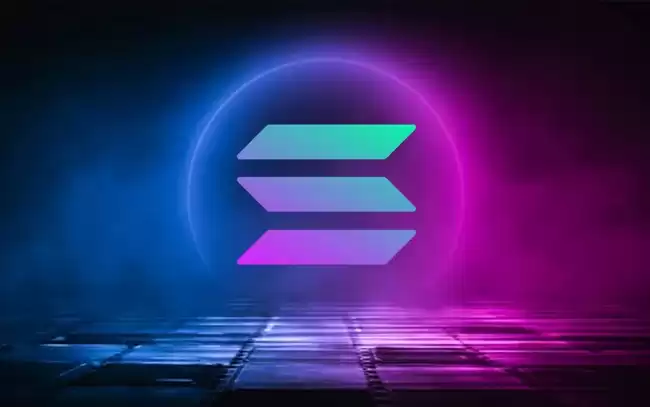
Solana, a cutting-edge blockchain platform, stands as a significant player in the decentralized finance (DeFi) ecosystem. Unlike Bitcoin and other proof-of-work blockchains, Solana utilizes a unique proof-of-history (PoH) consensus mechanism to validate transactions, enabling high transaction throughput and scalability. However, the question of whether Solana can be mined, like Bitcoin or Ethereum, remains prevalent.
In this comprehensive guide, we will delve into the intricacies of Solana mining, examining its distinctive characteristics, unraveling the intricacies of its mining process, and exploring the potential rewards and considerations associated with this endeavor.
Understanding Solana Mining- Proof-of-History (PoH):
Solana's departure from the traditional proof-of-work mining model is based on its implementation of Proof-of-History (PoH). PoH relies on verifiable delays, known as "Elapsed Time," to establish a chronological sequence of events. This mechanism eliminates the need for miners to solve complex computational puzzles, resulting in significant energy savings and enhanced transaction speed and scalability.
- Proof-of-Stake (PoS):
In addition to PoH, Solana incorporates a Proof-of-Stake (PoS) consensus mechanism, which enables token holders to validate transactions based on the amount of SOL they possess. SOL holders who stake their tokens are eligible to receive both staking rewards and potential transaction fees.
- Validators:
Within the Solana ecosystem, validators play a crucial role in maintaining network consensus and processing transactions. To qualify as a validator, individuals or entities must stake a minimum of 250,000 SOL and operate a high-performance server that meets the network's specifications.
- Transaction Processing:
Solana's high transaction throughput, boasting speeds of up to 65,000 transactions per second, is attributed to its parallel processing architecture and the efficiency of its PoH and PoS mechanisms. Transactions are grouped into "batches," each containing multiple transactions, which are processed concurrently by multiple validators.
- Acquire a High-Performance Server:
As a Solana validator, you will require a robust server capable of efficiently handling the intensive computational demands of the network. Specifications include a high-core count (minimum 8 cores), ample RAM (minimum 16GB), and a fast solid-state drive (SSD).
- Purchase or Acquire SOL:
To participate as a validator, you must stake a minimum of 250,000 SOL. You can purchase SOL through cryptocurrency exchanges or obtain it through alternative means, such as trading or earning it as rewards.
- Configure Your Server:
Once you have acquired a suitable server and SOL tokens, you will need to configure your server according to Solana's requirements. This involves setting up the software, establishing firewall rules, and connecting to the Solana network.
- Stake Your SOL:
To become an active validator, you must stake your 250,000 SOL tokens through the Solana software. The staked SOL will be held as collateral, ensuring your commitment and deterring malicious behavior.
- Monitor Your Server:
As a validator, you are responsible for ensuring your server is continuously online and functioning optimally. Performance issues or disruptions can impact your validation rewards and reputation.
- Validation Rewards:
Miners, also known as validators, are rewarded for successfully processing and validating transactions. The rewards are distributed in the form of SOL tokens and are proportional to the amount of SOL staked and the validator's performance.
- Transaction Fees:
In addition to validation rewards, the protocol charges transaction fees for processing transactions on the network. These fees are distributed among all active validators as additional revenue.
- Hardware Requirements:
Operating a Solana validator requires a dedicated and powerful server with high performance and reliability. The cost of acquiring such a server can be substantial, and ongoing maintenance and upgrades will also incur expenses.
- Staking Requirements:
The minimum staking requirement of 250,000 SOL may be a barrier to entry for some potential miners. The cost of purchasing this amount of SOL depends on the prevailing market price, which can fluctuate значительно.
- Competitive Environment:
The field of Solana mining is highly competitive, with numerous validators vying for rewards.
Disclaimer:info@kdj.com
The information provided is not trading advice. kdj.com does not assume any responsibility for any investments made based on the information provided in this article. Cryptocurrencies are highly volatile and it is highly recommended that you invest with caution after thorough research!
If you believe that the content used on this website infringes your copyright, please contact us immediately (info@kdj.com) and we will delete it promptly.
- BlockDAG, DOGE, HYPE Sponsorship: Crypto Trends Shaping 2025
- 2025-10-01 00:25:13
- Deutsche Börse and Circle: A StableCoin Adoption Powerhouse in Europe
- 2025-10-01 00:25:13
- BlockDAG's Presale Buzz: Is It the Crypto to Watch in October 2025?
- 2025-10-01 00:30:13
- Bitcoin, Crypto, and IQ: When Genius Meets Digital Gold?
- 2025-10-01 00:30:13
- Stablecoins, American Innovation, and Wallet Tokens: The Next Frontier
- 2025-10-01 00:35:12
- NBU, Coins, and Crypto in Ukraine: A New Yorker's Take
- 2025-10-01 00:45:14
Related knowledge
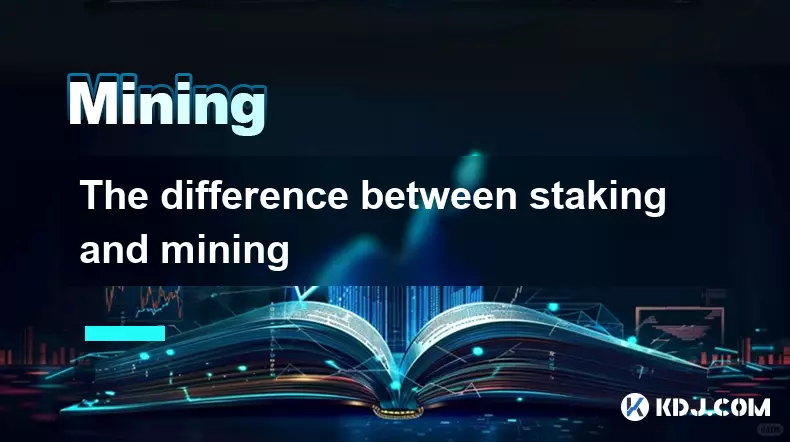
The difference between staking and mining
Sep 24,2025 at 05:18am
Understanding Staking in the Cryptocurrency Ecosystem1. Staking involves holding funds in a cryptocurrency wallet to support the operations of a block...
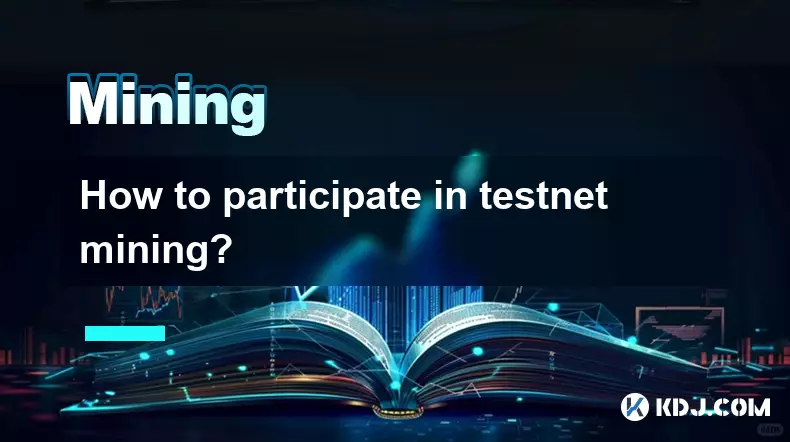
How to participate in testnet mining?
Sep 22,2025 at 09:18am
Understanding Testnet Mining in the Crypto Ecosystem1. Testnet mining is a method used by blockchain developers to simulate real-world conditions on a...

How to dispose of abandoned mining machines?
Sep 19,2025 at 08:19pm
Assessing the Condition of Abandoned Mining Rigs1. Begin by inspecting each mining machine for visible damage, corrosion, or missing components. Machi...

How to identify high-quality mining pools?
Sep 21,2025 at 03:19pm
Reputation and Track Record1. A mining pool’s reputation is built over time through consistent performance and transparency. Pools that have operated ...
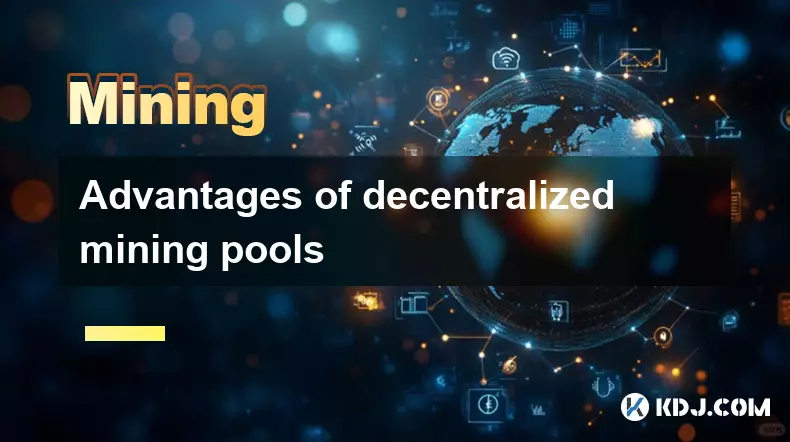
Advantages of decentralized mining pools
Sep 20,2025 at 04:36pm
Enhanced Security and Resistance to Censorship1. Decentralized mining pools operate on blockchain-based smart contracts, eliminating the need for a ce...
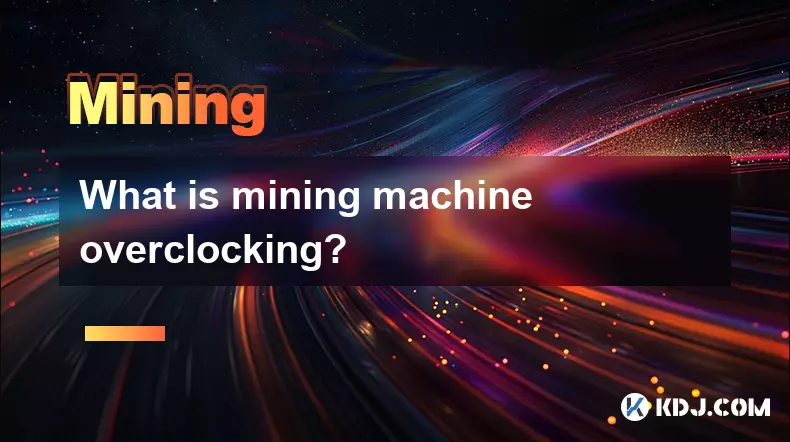
What is mining machine overclocking?
Sep 21,2025 at 07:19pm
Understanding Mining Machine Overclocking1. Mining machine overclocking refers to the process of increasing the operating frequency of a cryptocurrenc...

The difference between staking and mining
Sep 24,2025 at 05:18am
Understanding Staking in the Cryptocurrency Ecosystem1. Staking involves holding funds in a cryptocurrency wallet to support the operations of a block...

How to participate in testnet mining?
Sep 22,2025 at 09:18am
Understanding Testnet Mining in the Crypto Ecosystem1. Testnet mining is a method used by blockchain developers to simulate real-world conditions on a...

How to dispose of abandoned mining machines?
Sep 19,2025 at 08:19pm
Assessing the Condition of Abandoned Mining Rigs1. Begin by inspecting each mining machine for visible damage, corrosion, or missing components. Machi...

How to identify high-quality mining pools?
Sep 21,2025 at 03:19pm
Reputation and Track Record1. A mining pool’s reputation is built over time through consistent performance and transparency. Pools that have operated ...

Advantages of decentralized mining pools
Sep 20,2025 at 04:36pm
Enhanced Security and Resistance to Censorship1. Decentralized mining pools operate on blockchain-based smart contracts, eliminating the need for a ce...

What is mining machine overclocking?
Sep 21,2025 at 07:19pm
Understanding Mining Machine Overclocking1. Mining machine overclocking refers to the process of increasing the operating frequency of a cryptocurrenc...
See all articles










































































